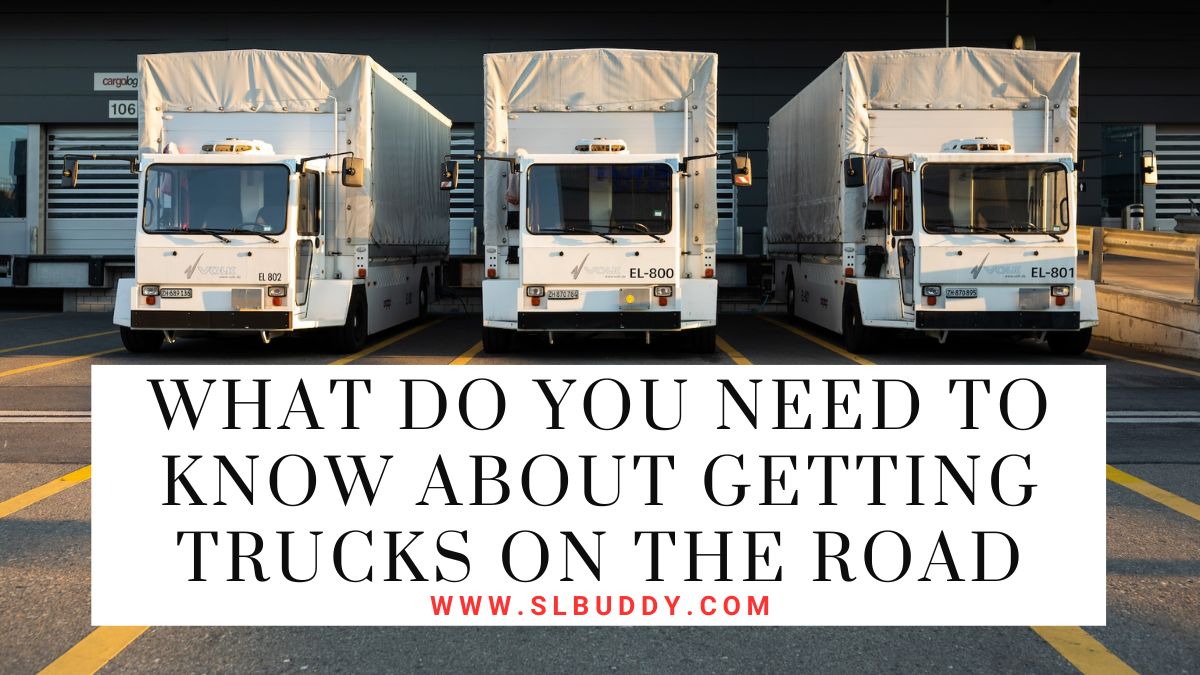
In the world of logistics and transportation, getting trucks on the road efficiently and safely is paramount.
Whether you’re a seasoned trucking professional or a novice looking to dive into the industry, there’s a plethora of essential information to grasp.
In this comprehensive guide, we’ll explore the intricacies of putting trucks on the road.
From regulations and vehicle selection to driver management and maintenance, let’s embark on this journey to demystify the world of trucking.
Understanding Regulatory Compliance
Regulatory compliance is the bedrock upon which the trucking industry is built. The first step in this intricate journey is understanding the myriad of federal and state regulations that govern the industry.
Each state may have its own set of rules regarding weight limits, road restrictions, and other specifics, so it’s crucial to have a clear grasp of local regulations.
Additionally, you’ll need to navigate the labyrinth of licensing requirements. Whether you’re an owner-operator or running a fleet, having the appropriate licenses, such as a Commercial Driver’s License (CDL), is essential.
You may also need to obtain a manage operators licence, which allows you to carry goods for hire across state lines. Understanding the classification of your vehicles is also vital, as different rules apply to various vehicle categories, such as commercial vehicles, buses, and hazardous material transporters.
One of the most critical aspects of regulation to understand is the Hours of Service (HOS) regulations. These rules govern the number of hours a driver can operate and dictate mandatory rest periods.
Staying in compliance with HOS regulations is not only a legal requirement but also crucial for driver safety. Violations can result in penalties, fines, and potential damage to your company’s reputation.
Selecting the Right Truck
The heart of your trucking business is, of course, the trucks themselves. Choosing the right truck can significantly impact your efficiency and the long-term success of your operation. The world of truck selection is vast, with various types, sizes, and applications available.
Consider factors like the type of cargo you’ll be transporting and the distance you’ll be traveling.
Different trucks are tailored to specific needs, whether it’s long-haul trucking, local deliveries, or specialized cargo like refrigerated goods or hazardous materials.
Take into account fuel efficiency, as this can have a substantial impact on your operating costs. Hybrid and electric trucks are becoming more prevalent as the industry strives to reduce its carbon footprint.
It’s also important to keep in mind the maintenance and repair requirements for the trucks you choose.
Some models may be easier and less costly to maintain than others. Exploring warranties and maintenance plans can help mitigate unexpected expenses.
Fleet Management: A Balancing Act
Running a trucking fleet efficiently is akin to a well-orchestrated symphony. Fleet management involves a multitude of moving parts that must work in harmony.
Central to this is dispatching and routing, which involves scheduling drivers and selecting the most efficient routes.
Modern technology plays a significant role in streamlining fleet management. Fleet management software can assist in route optimization, helping drivers avoid traffic congestion and reduce fuel consumption.
Real-time tracking allows you to monitor your vehicles, ensuring they stay on course and schedule.
Fuel management is another critical aspect of fleet management. Effective management can save significant costs over time.
Monitoring fuel consumption, training drivers on fuel-efficient practices, and investing in more fuel-efficient vehicles can all contribute to these savings.
Driver Recruitment and Retention: The Human Element
Your drivers are the lifeblood of your trucking business. Recruitment and retention of skilled drivers are pivotal to your success.
In the competitive world of trucking, finding and keeping reliable drivers can be challenging.
Recruitment involves advertising positions, screening applicants, and conducting interviews.
To attract quality drivers, consider offering competitive compensation packages, signing bonuses, and other incentives.
Providing a supportive work environment with reasonable hours and benefits, such as health insurance and retirement plans, can be equally enticing to potential hires.
Once you’ve assembled a team of drivers, retaining them is just as important. High turnover rates can be costly, both in terms of recruitment and training.
Regular feedback, training opportunities, and recognition for a job well done can go a long way in building loyalty among your drivers.
Keeping Your Trucks in Top Shape
Truck maintenance is not just about keeping vehicles in working order; it’s about ensuring safety on the road.
Scheduled maintenance is a critical aspect of trucking operations. Regular inspections can identify and address potential issues before they become costly and dangerous problems.
When it comes to truck maintenance, prevention is the best cure. Investing in predictive maintenance technology can help you anticipate issues before they cause breakdowns.
This can save you time and money while also ensuring that your vehicles are on the road, where they belong, rather than stuck in the repair shop.
Another important consideration is emergency repairs. Having a plan in place for breakdowns on the road can help minimize downtime.
Establish relationships with reputable repair shops and consider enrolling in emergency roadside assistance programs to keep your trucks moving.
Navigating Insurance: Protecting Your Investment
Trucking involves inherent risks. Accidents, cargo theft, and damage to goods are all potential pitfalls. To protect your investment and mitigate risks, trucking insurance is a must.
Understanding the types of insurance coverage you need is essential. Liability insurance covers damages to other vehicles and property in case of an accident, while cargo insurance safeguards the goods you’re transporting.
Workers’ compensation insurance is also necessary to protect your drivers in the event of injury on the job.
It’s vital to research insurance providers and policies thoroughly. Seek out providers with a strong track record in the trucking industry, and make sure your policy aligns with your specific needs.
Keep in mind that the cost of insurance can vary widely based on factors like the size of your fleet, your safety record, and the types of cargo you transport.
Sustainability in Trucking
The trucking industry is undergoing a significant transformation as environmental concerns take center stage.
Being eco-friendly is not just a trend but a necessity to meet the demands of both customers and regulatory bodies.
Exploring alternative fuels, such as natural gas or electricity, can reduce your carbon footprint and operational costs.
Many governments are offering incentives to encourage the adoption of green technologies, which can help offset the initial investment.
Adhering to emissions standards is vital in ensuring your trucks meet environmental requirements.
This not only aids in reducing your environmental impact but also prevents costly fines and penalties.
Many customers now prioritize working with environmentally responsible carriers, so going green can also be a marketing advantage.
Effective Route Planning: Saving Time and Money
Efficient route planning is a pivotal element of successful trucking operations. Careful planning can significantly impact your bottom line, as it minimizes fuel costs and delivery times while maximizing productivity.
The use of GPS and routing software has revolutionized route planning. These tools allow for real-time monitoring of traffic conditions, helping drivers avoid congested routes and make timely deliveries.
Advanced systems can even adjust routes on the fly to optimize for changing conditions.
Incorporate strategies to mitigate the impact of traffic, construction, and inclement weather.
This includes contingency planning and clear communication with drivers to ensure they have the tools and support needed to make decisions on the road.
Don’t miss: Who Has Overall Responsibility for Managing the On-Scene Incident?
The bottom line
In the dynamic world of trucking, staying informed and adaptable is key. Whether you’re a trucking veteran or just starting, these comprehensive insights into the world of getting trucks on the road can serve as your roadmap to success.
As you venture into the industry, remember that continuous learning, compliance, and embracing technology will keep your trucking business on the path to prosperity.














